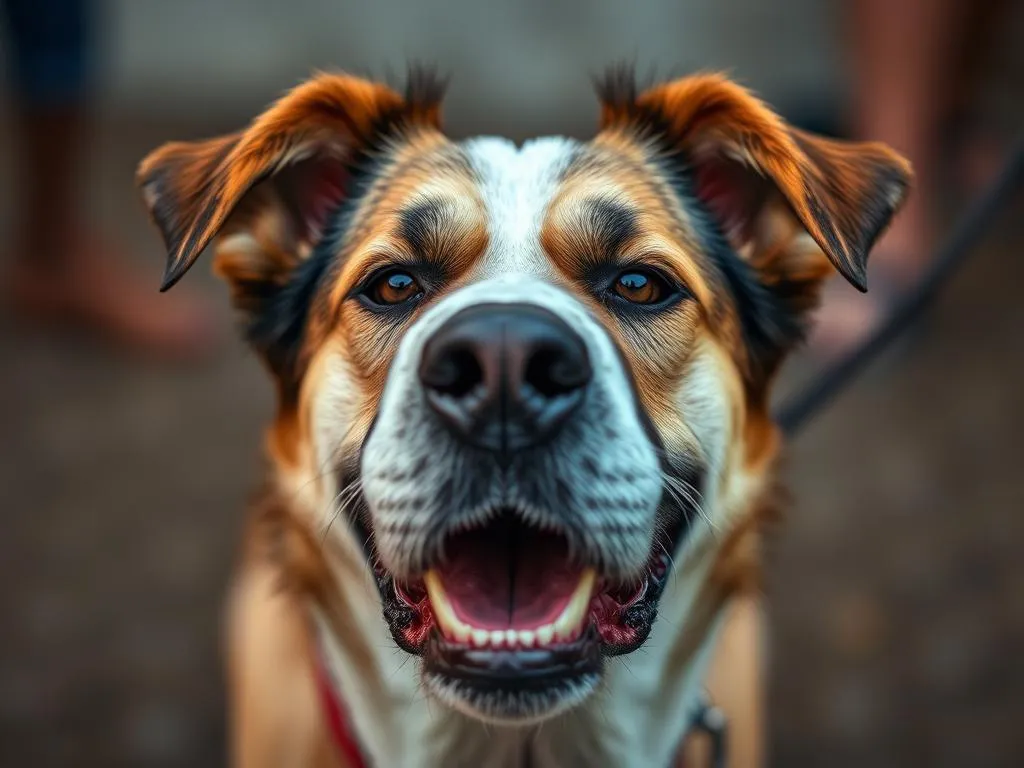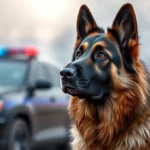
Introduction
Understanding dog behavior is essential for any pet owner. Among the many vocalizations dogs use to communicate, growling is one of the most misunderstood. While many people view growling as a precursor to aggression, it can signify a range of emotions and intentions. This article aims to delve into the reasons behind why dogs growl, helping pet owners interpret this behavior correctly and address it appropriately.
Understanding Dog Communication
Canine Communication Styles
Dogs have a complex system of communication that includes vocalizations, body language, and facial expressions. While barking is often associated with excitement or alertness, growling serves various purposes.
- Vocalizations: Dogs bark, whine, and growl to convey their feelings. Each sound carries different meanings depending on the context.
- Body Language: A dog’s posture, tail position, and ear orientation are critical in understanding their emotional state. For instance, a dog with a wagging tail may seem friendly, while a stiff tail could indicate tension.
The Importance of Context
The context in which a dog growls is crucial for interpretation. A dog might growl during play, signaling excitement, or it may growl when feeling threatened or defensive. Recognizing the differences between these scenarios helps in understanding a dog’s intent.
Reasons Why Dogs Growl
Fear and Anxiety
One of the primary reasons dogs growl is fear or anxiety. A growl can serve as a warning signal that the dog feels threatened or uncomfortable.
- Fear-based Growling: This occurs when a dog perceives a threat, be it a loud noise, unfamiliar person, or another animal. Signs of an anxious dog may include cowering, tail tucking, and excessive panting.
Warning Signals
Growling can act as a warning to other animals or humans. When a dog growls, it often communicates, “I feel threatened, and I need you to back off.”
- Protective Behavior: Dogs may growl in specific situations, such as when someone approaches their food bowl, toys, or resting area. This behavior is an instinctive response to protect their resources.
Playful Growling
Not all growling is aggressive. Dogs sometimes growl during play, which can indicate excitement and engagement.
- Differentiating Growls: Playful growling is usually accompanied by a relaxed body posture, wagging tail, and playful antics, like bowing or chasing.
Territorial Behavior
Growling can also be a form of territorial defense. Dogs are naturally protective of their space and may growl at perceived intruders.
- Triggers of Territorial Growling: Common situations include strangers entering the home, other animals approaching their territory, or even a person getting too close to their owner.
Pain or Discomfort
Sometimes, a growl can indicate that a dog is in pain or discomfort.
- Signs of Pain: If a typically friendly dog suddenly starts growling, it may be worth investigating further. Changes in behavior, reluctance to move, or sensitivity to touch often accompany pain-related growling. A veterinary check-up is essential in such cases.
How to Interpret Growling
Listening to the Growl
Understanding the nuances of a dog’s growl can provide insights into their feelings.
- Different Types of Growls: Pay attention to the volume, pitch, and duration of the growl. A low, rumbling growl might indicate discomfort, while a high-pitched growl could suggest excitement or playfulness.
Observing Body Language
Combining vocalizations with body language gives a clearer picture of what a dog is communicating.
- Signs of Relaxation vs. Stress: A relaxed dog may have a loose body posture and wagging tail, whereas a stressed dog may have stiffened muscles, pinned ears, and a lowered tail.
Addressing Growling Behavior
Assessing the Situation
Before jumping to conclusions about why a dog growls, it’s essential to evaluate the situation.
- Understanding Context and Triggers: Identify what is causing the growling. Is it a specific person, situation, or object? Observing the surroundings can provide valuable clues.
Positive Reinforcement Techniques
To address unwanted growling, positive reinforcement can be an effective method.
- Redirecting Behavior: Offering treats or praise when the dog remains calm can help redirect their focus. Training commands that promote calmness, such as “sit” or “stay,” can also be beneficial.
Seeking Professional Help
If growling persists or escalates, it may be time to consult a professional.
- Veterinary or Trainer Consultation: A veterinarian can rule out medical issues, while a dog trainer or behaviorist can provide tailored strategies for managing growling behavior. Behavioral therapy options are also available for more severe cases.
Prevention Strategies for Growling
Early Socialization
One of the best ways to prevent growling is through early socialization.
- Exposing Dogs to Various Environments: Introducing dogs to different people, animals, and settings can help them feel more comfortable and less anxious. Socializing puppies during their critical development period is essential.
Consistent Training
Establishing rules and boundaries can help prevent unwanted growling behavior.
- Utilizing Commands: Consistent training using commands like “leave it” or “quiet” can foster good behavior. Reinforce positive actions with rewards to encourage compliance.
Building Trust
A strong bond between dog and owner can reduce anxiety and fear-driven growling.
- Strengthening the Bond: Spend quality time with your dog through activities like play, training, and walks. Understanding your dog’s needs and responding to them fosters trust and security.
Conclusion
In conclusion, understanding why dogs growl is crucial for any dog owner. Recognizing the reasons behind this behavior—whether it stems from fear, playfulness, territorial instincts, or pain—enables us to respond appropriately. By paying attention to context, body language, and vocalizations, we can better interpret what our dogs are trying to communicate.
Addressing growling behavior through positive reinforcement, consistent training, and early socialization can help create a harmonious environment for both dogs and their owners. Observing and responding to a dog’s needs is not only beneficial for their well-being but also for fostering a deeper bond and understanding between you and your furry friend.









